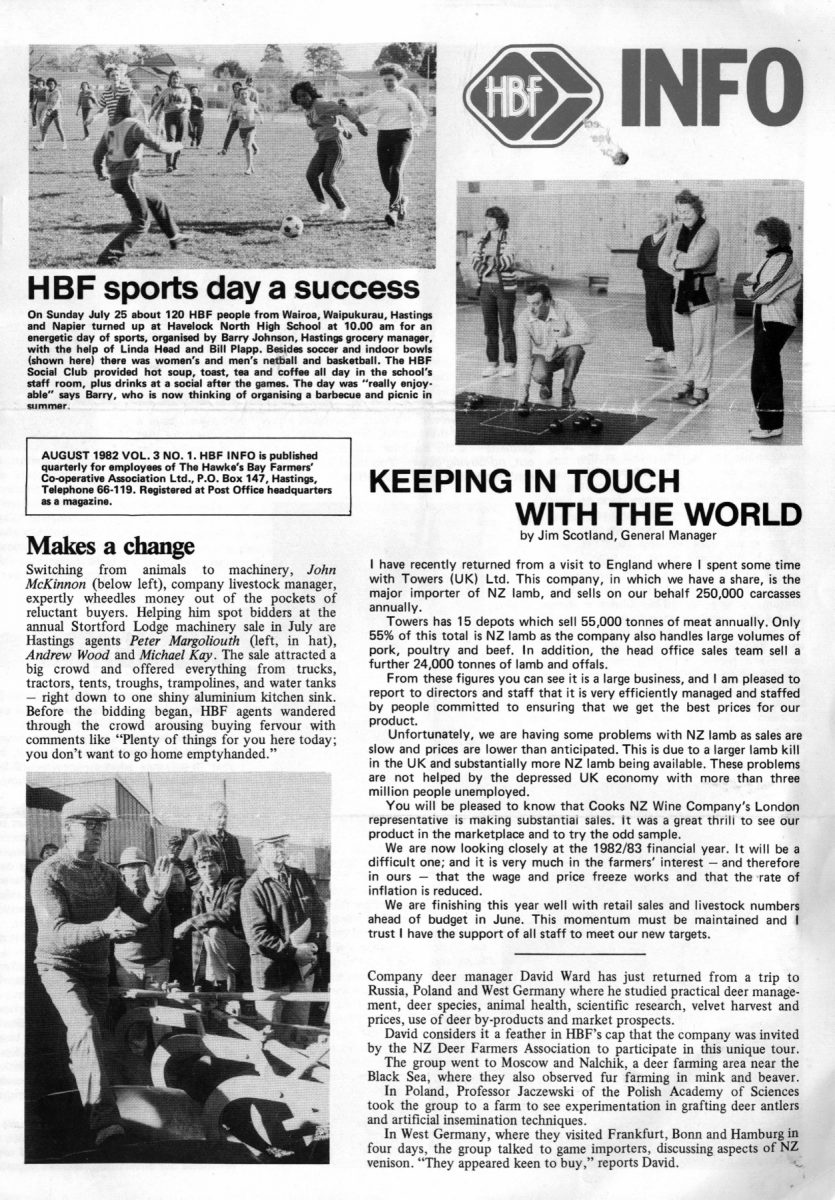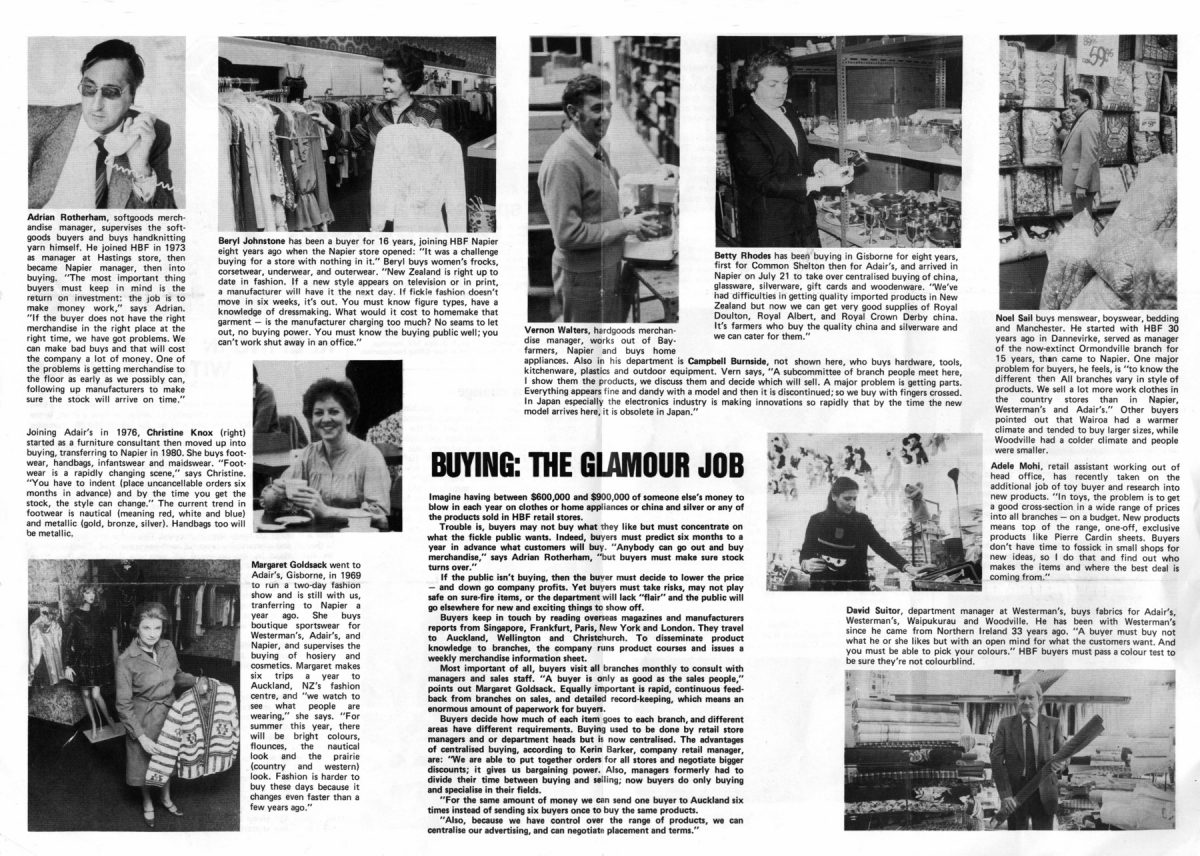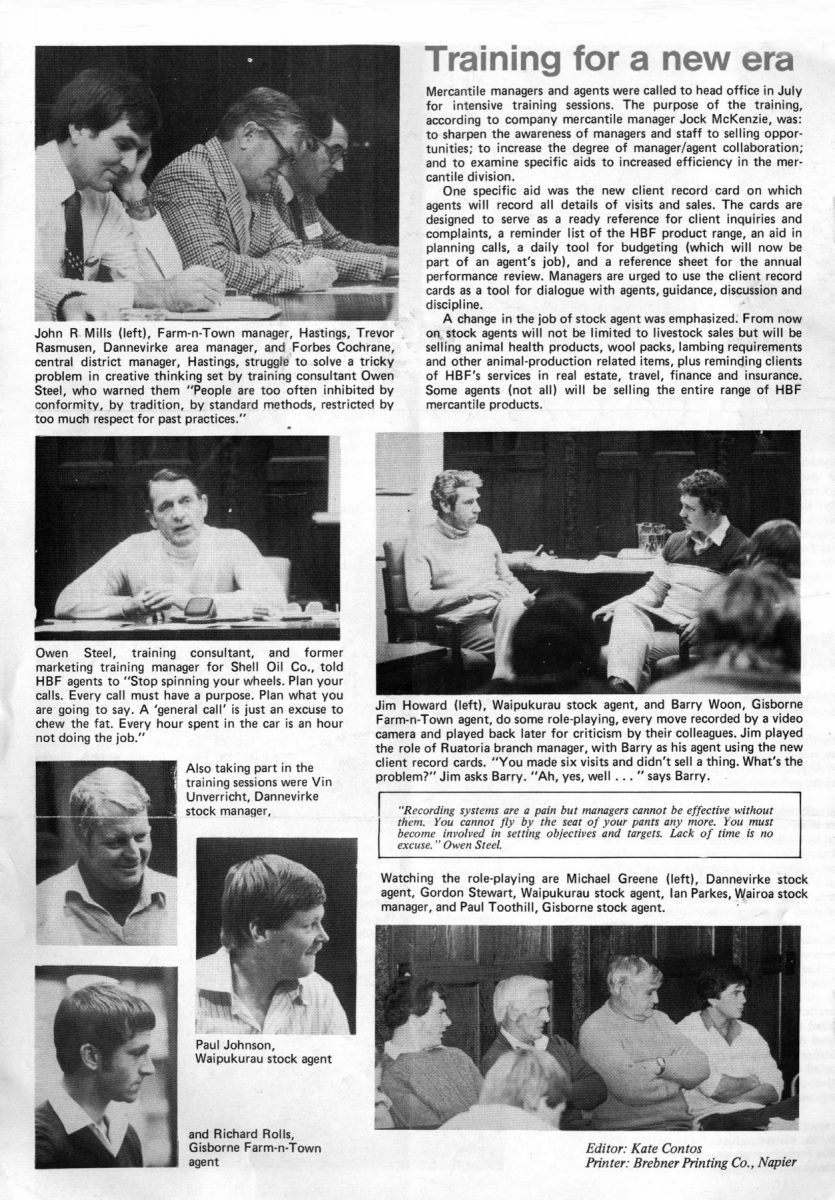BUYING: THE GLAMOUR JOB
Imagine having between $600,000 and $900,000 of someone else’s money to blow in each year on clothes or home appliances or china and silver or any of the products sold in HBF retail stores.
Trouble is, buyers may not buy what they like but must concentrate on what the fickle public wants. Indeed, buyers must predict six months to a year in advance what customers will buy. “Anybody can go out and buy merchandise,” says Adrian Rotherham, “but buyers must make sure stock turns over.”
If the public isn’t buying, then the buyer must decide to lower the price and down go company profits. Yet buyers must take risks, may not play safe on sure-fire items, or the department will lack “flair” and the public will go elsewhere for new and exciting things to show off.
Buyers keep in touch by reading overseas magazines and manufacturers reports from Singapore, Frankfurt, Paris, New York and London. They travel to Auckland, Wellington and Christchurch. To disseminate product knowledge to branches, the company runs product courses and issues a weekly merchandise information sheet.
Most important of all, buyers visit all branches monthly to consult with managers and sales staff. “A buyer is only as good as the sales people,” points out Margaret Goldsack. Equally important is rapid, continuous feedback from branches on sales, and detailed record-keeping, which means an enormous amount of paperwork for buyers.
Buyers decide how much of each item goes to each branch, and different areas have different requirements. Buying used to be done by retail store managers and or department heads but is now centralised. The advantages of centralised buying, according to Kerin Barker, company retail manager, are: “We are able to put together orders for all stores and negotiate bigger discounts; it gives us bargaining power. Also, managers formerly had to divide their time between buying and selling; now buyers do only buying and specialise in their fields.
“For the same amount of money we can send one buyer to Auckland six times instead of sending six buyers once to buy the same products.
“Also, because we have control over the range of products, we can centralise our advertising, and can negotiate placement and terms.”
Adrian Rotherham, softgoods merchandise manager, supervises the softgoods buyers and buys handknitting yarn himself. He joined HBF in 1973 as manager at Hastings store, then became Napier manager, then into buying. “The most important thing buyers must keep in mind is the return on investment: the job is to make money work,” says Adrian. “If the buyer does not have the right merchandise in the right place at the right time, we have got problems. We can make bad buys and that will cost the company a lot of money. One of the problems is getting merchandise to the floor as early as we possibly can, following up manufacturers to make sure the stock will arrive on time.”
Joining Adairs in 1976, Christine Knox (right) started as a furniture consultant then moved up into buying, transferring to Napier in 1980. She buys footwear, handbags, infantswear and maidswear. “Footwear is a rapidly changing scene,” says Christine. “You have to indent (place uncancellable orders six months in advance) and by the time you get the stock, the style can change.” The current trend in footwear is nautical (meaning red, white and blue) and metallic (gold, bronze and silver). Handbags too will be metallic.
Margaret Goldsack went into Adairs, Gisborne, in 1969 to run a two-day fashion show and is still with us, transferring to Napier a year ago. She buys boutique sportswear for Westerman’s, Adair’s, and Napier, and supervises the buying of hosiery and cosmetics. Margaret makes six trips a year to Auckland, NZ’s fashion centre, and “we watch to see what people are wearing” she says. “For summer this year, there will be bright colours, flounces, the nautical look and the prairie (country and western) look. Fashion is harder to buy these days because it changes even faster than a few years ago.
Beryl Johnstone has been a buyer for 16 years, joining HBF Napier eight years ago when the Napier store opened: “It was a challenge buying for a store with nothing in it.” Beryl buys women’s frocks, corsetwear, underwear, and outerwear. “New Zealand is right up to date in fashion. If a new style appears on television or in print, a manufacturer will have it the next day. If fickle fashion doesn’t move in six weeks, it’s out. You must know figure types, have a knowledge of dressmaking. What would it cost to homemake that garment – is the manufacturer charging too much? No seams to let out, no buying power. You must know the buying public well; you can’t work shut away in an office.”
Vernon Walters, hardgoods merchandise manager, works out of Bayfarmers, Napier and buys home appliances. Also in his department is Campbell Burnside, not shown here, who buys hardware, tools, kitchenware, plastics and outdoor equipment. Vern says, “A subcommittee of branch people meet here, I show them the products, we discuss them and decide which will sell. A major problem is getting parts. Everything appears fine and dandy with a model and then it is discontinued; so we buy with fingers crossed. In Japan especially the electronics industry is making innovations so rapidly that by the time the new model arrives here, it is obsolete in Japan.”
Betty Rhodes has been buying in Gisborne for eight years, first for Common Shelton then for Adair’s, and arrived in Napier on July 21 to take over centralised buying of china, glassware, silverware, gift cards and woodenware. “We’ve had difficulties in getting quality imported products in New Zealand but now we can get very good supplies of Royal Doulton, Royal Albert, and Royal Crown Derby china. lt’s farmers who buy the quality china and silverware and we can cater for them.”
Noel Sail buys menswear, boyswear, bedding and Manchester. He started with HBF 30 years ago in Dannevirke, served as manager of the now-extinct Ormondville branch for 15 years, than came to Napier. One major problem for buyers, he feels, is “to know the different then All branches vary in style of products. We sell a lot more work clothes in the country stores than in Napier, Westerman’s and Adair’s.” Other buyers pointed out that Wairoa had a warmer climate and tended to buy larger sizes, while Woodville had a colder climate and people were smaller.
Adele Mohi, retail assistant working out of head office, has recently taken on the additional job of toy buyer and research into new products. “In toys, the problem is to get a good cross-section in a wide range of prices into all branches – on a budget. New products means top of the range, one-off, exclusive products like Pierre Cardin sheets. Buyers don’t have time to fossick in small shops for new ideas, so I do that and find out who makes the items and where the best deal is coming from.”
David Suitor, department manager at Westerman’s, buys fabrics for Adair’s, Westerman’s, Waipukurau and Woodville. He has been with Westerman’s since he came from Northern Ireland 33 years ago. “A buyer must buy not what he or she likes but with an open mind for what the customers want. And you must be able to pick your colours.” HBF buyers must pass a colour test to be sure they’re not colourblind.














Do you know something about this record?
Please note we cannot verify the accuracy of any information posted by the community.